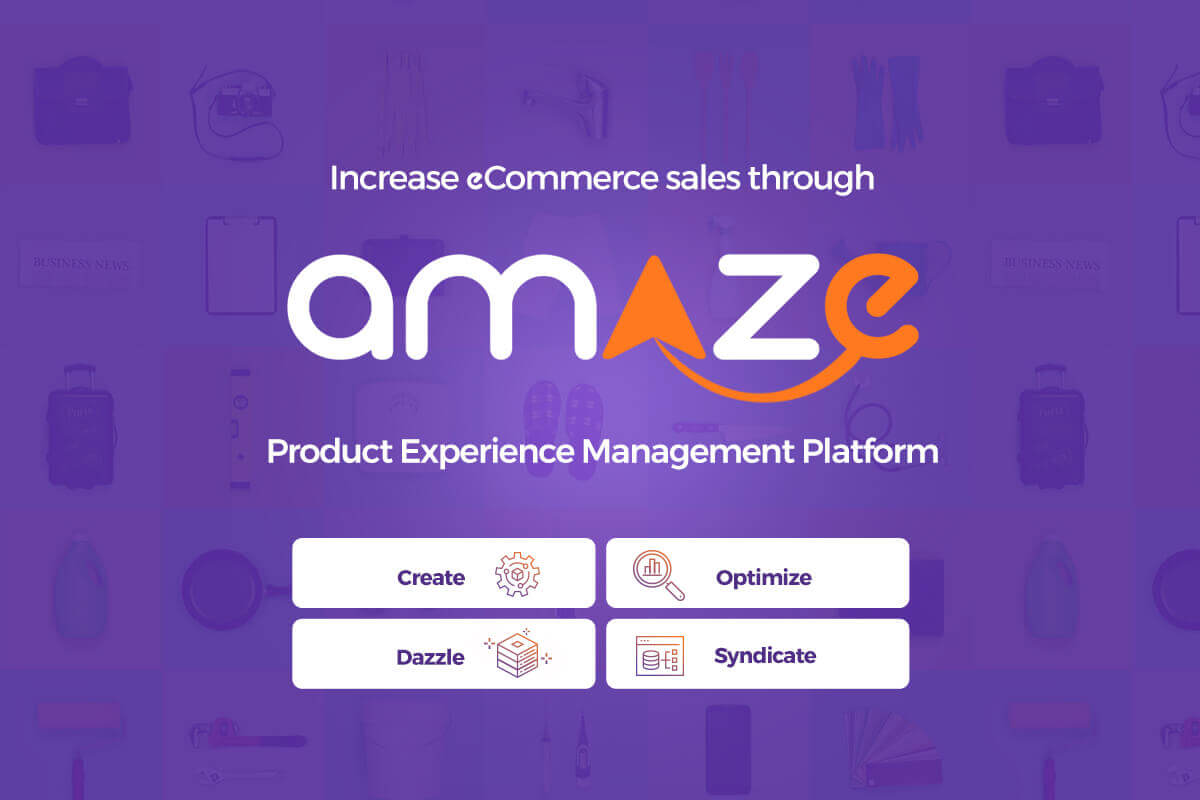The Story Behind Why We Built the Product Experience Management Platform “Amaze”

The Story Behind Why We Built the Product Experience Management Platform “Amaze”
In the last couple of years, the eCommerce market has exploded but it has become increasingly competitive. Almost every organization is today venturing into the space to keep up with demand as well as keep customers happy. Although this competition has made it easy for shoppers to find items they are looking for, for businesses, the risk of losing customers to competition is at an all-time high. According to a study, 63% of buyers are willing to take their search to other eCommerce sites if they are unable to find what they are looking for and 55% take their business elsewhere if they do not get sufficient product information.
It’s clear that if brands want customers to stick by them, they need to deliver eCommerce experiences that are intuitive, seamless, and unmatched.
eCommerce boomed beyond anyone’s imagination
In the early days of retail, business was straightforward: brands had physical stores and shoppers could just walk into them and buy the things they liked or needed. Fast- forward to today, brands have to be present on eCommerce megabrands, their own website, mobile app, and eCommerce site, and other third-party apps from aggregators and distributors.
In 2020, worldwide eCommerce sales amounted to $4.28 trillion and is expected to reach $6.3 trillion by 2024. This massive growth is primarily driven by the explosion of mobile devices, the deep penetration of the internet, the convenience of shopping from the comfort of home, and the luxury of targeted promotions and personalized interactions.
2020 became a turning point for eCommerce as the pandemic made the online channel a must-have for brands who were forced to shut down their brick-and-mortar stores.
But brought with it several challenges
As eCommerce suddenly became super important for everyone, there was an explosion in the number of channels that were being used to reach customers. The system suddenly became so complex. And the different channels don’t make it easy for brands either: each channel has a different way of describing the product and demands a different set of attributes and content elements.
Buyer behavior also became complex and sophisticated. Today, buyer journeys span channels, getting product information on one, addressing a query on another, and completing the purchase on a third. When all of this is put together, it’s apparent that the product content challenge facing brands is massive.
Brands are confronted with the formidable task of ensuring quality, consistency, accuracy, updates, and relevance on each channel and across channels. They face that task with the full knowledge that an inability to do this well will cost them heavily in the eCommerce stakes.
In this environment, we saw major gaps that prevented companies from making their eCommerce dreams work. We saw that most organizations struggled with:
- Guiding buyers to the products they are looking for to improve discovery rate and reduce abandonment rate
- Catering to different buyer types and offer a range of different browse and search experiences
- Maintaining consistent attribution and drive seamless faceted search
- Growing the eCommerce offering to new categories and increase sales
- Setting data standards to ensure best-in-class product experiences before pushing items to the eCommerce site
- Leveraging modern style guides to maintain consistency throughout the catalog
That’s why we built Amaze
In the many years that we’ve been in this business, we have learned that product experience has become crucial for digital success. Since product experience is what drives eCommerce sales in the end, if organizations want to own the digital shelf, they need to invest in a robust platform that allows them to create best-in-class online product experiences for customers to boost eCommerce revenue.
We know that to drive up sales, brands need to increase customer loyalty. And the only way to do this is by enhancing the customer experience. This includes: enabling customers to quickly find the product they want, provide them with the product information they need to progress in their buyer journey, and present it in a way that attracts, engages, and convinces them into taking a favorable action.
That’s how Amaze came into existence; as an innovative Product Experience Management solution, Amaze allows brands to drive eCommerce sales and revenue, create customer-centric experiences, and amaze customers with great product experiences. It allows them to offer complete, consistent, and contextually relevant product content and win customer confidence and loyalty.
With Amaze, brands can:
- Centralize the product data lifecycle : Create and edit product content on a single platform, fine-tune browse and search functions to enhance discovery, enable digital asset management in a way that boosts customer confidence, and automate the onboarding and enlisting process to increase operational efficiency and introduce new products into the market at speed.
- Accelerate time-to-market & item onboarding : Create better processes by centralizing, organizing, and managing product data to ensure products hit the digital shelf sooner. Reduce time-to-market to realize accelerated revenue generation and a jump in overall sales.
- Increase operational efficiency : Empower teams with a platform that centralizes information to help them get more done in less time. Shift focus to value-add activities such as enriching content and creating a differentiated browse and search experience
- Lower cost of ownership : Leverage hosting, support, and upgrades with the Amaze license at a fraction of the cost of a typical On-Prem or Single Tenant Cloud system.
Related Articles
Recent Post
Categories





